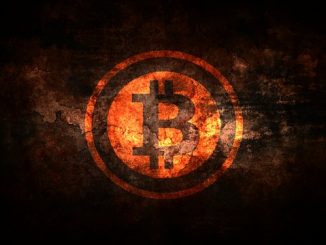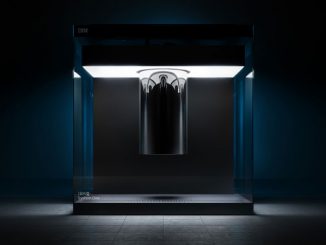
A team of scientist at the Department of Experimental Physics at the University of Innsbruck and at the Austrian Academy of Sciences have managed to achieve a record-breaking transfer of quantum entanglement between matter and light, bringing the possibility of a super-secure quantum internet closer to reality.
For the first time, light entangled with quantum information covered a distance of 50 kilometers (km) using fiber optic cables. “This is two orders of magnitude further than was previously possible and is a practical distance to start building inter-city quantum networks,” says the Innsbruck-based experimental physicist Ben Lanyon, who led the research.
Unlike today’s hackable internet and its many vulnerabilities that are easily penetrated, a quantum based internet network could provide a level of speed, privacy and unbreakable security that is impossible to achieve with today’s internet.
However, based on the no cloning theorem in quantum computing, quantum information can not be copied. Meaning, it wouldn’t work through your router. Such information needs to be carried by “entanglement“, a special state of two quantum bits – typically electrons or photons and otherwise known as qubits – which can be polarized in two different dimensions simultaneously. These particles can instantly communicate even when separated by great distances (Einstein referred to this weird phenomenon as ‘spooky action at a distance’).
So the Lanyon’s team started the experiment with a calcium ion. After suspending it in an ion trap, they blasted it with laser beams. That process allowed them to write a quantum state onto the ion – making it emit a photon, the fundamental particles of visible light. The creation of this photon, which gained the same quantum state as the ion, allowed for the two particles to entangle.
But the challenge remained in the amplification and transmission of the photon over fiber optic cables. Lanyon said the photon emitted by the calcium ion had a wavelength of only 854 nanometers (nm). It needed to be converted to the current standard wavelength for telecommunications of 1,550 nm. To achieve the conversion the team had to put the photon through a nonlinear crystal illuminated by a powerful laser. Once the desired wavelength was achieved, the researchers send the photon through a 50-kilometer-long standard optical fiber line.
The tests showed that not only did the quantum-light representing particle manage to survive a 50-km journey through the optic cable, but it did so by keeping its entangled state with the light particle.
Stretching further
Such encouraging results that made the new distance a record for entangling light and matter, will pave the way for the practical use of long-range quantum communication. In fact, Lanyon says he and his team now want such a particle to travel through a 100-km-long optical fiber line.
While a fully realized quantum network is still years away, recent breakthroughs in transmitting and manipulating quantum information suggest practical quantum networks are within reach. What’s more important though, is that the new knowledge will help our understanding of quantum mechanics in new ways, bringing us a step closer to a practical and unhackable future quantum internet.
The research was recently published in the journal ‘Quantum Information’ under the title ‘Light-matter entanglement over 50 km of optical fibre’.
References: Phys.org, New Atlas
Disclaimer: This page contains affiliate links. If you choose to make a purchase after clicking a link, we may receive a commission at no additional cost to you. Thank you for your support!





Leave a Reply